toc
Icons in Body Text
Uint1:The Warehouse Management System as Part of Logistics Execution
Lesson:Logistics Execution
Elements and Origins
Features
Basic Forms of Process Mapping
Exercise 1: Logistics Execution (Optional)
Lesson:Main Features of Warehouse Management
Warehouse Management in Logistics Execution
Main Functions of Warehouse Management
Inventory Management exact to storage bin level
Interfaces to Other SAP ECC Applications
Inventory Management (MM-IM)
Uint2:Structural Elements
Lesson:
The Warehouse Number and its Substructures
Creating a New Warehouse Number
Creating New Storage Types and New Storage Sections
Exercise 2: Basic Warehouse Management Customizing
Lesson:
Construction of a Storage Bin Master Record
Creating Storage Bins
Using Sort Variables
Exercise 3: Automatic Creation of Storage Bins
Lesson:
Storage Location and Warehouse Number
Connecting Warehouse Management to Inventory Management
Exercise 4: Connection of Warehouse Management to Inventory Mana
Lesson:
The Quant
Material number
Addition to Existing Stock and Mixed Storage
Exercise 5: Displaying Storage Bin Stocks
The Interface Between Inventory Management and Warehouse Managem
Lesson:
Movement Types
Interim Storage Area and Interim Storage Bin Search
Exercise 6: Movement Type and Interim Storage Type Determination
Lesson:
The Transfer Order
Immediate Transfer Order Creation
Automatic Transfer Order Creation
Exercise 7: Activating Immediate Transfer Order Creation
Lesson:
Function of the Special Movement Indicator
Direct Putaway with a Special Movement Indicator
Exercise 8: Putaway with a Special Movement Indicator
Lesson:
Purpose of Storage Location Control
Storage Location Reference
Exercise 9: Setting up Storage Location Control for the Goods R
Putaway Control
Lesson:
Putaway Process
Handling Differences in the Warehouse
Exercise 10: Setting Up the Storage Type and Storage Section Sea
Lesson:
Storage Bin Search
Fixed bin ( F )
Overview of Putaway Strategies
Exercise 11: Testing the “ Pallets ” Putaway Strategy
Lesson:
The Warehouse Management Views
Storage-Relevant Indicators
Stock placement indicator
Palletization Data
Exercise 12: Use of the Warehouse Management Views
Lesson:
Storage Unit Type Check
Capacity Check
1. Check based on the maximum weight per storage bin
Details of the Capacity Check Methods
Exercise 13: Forms of Capacity Check
Lesson:
Quality Inspection in Warehouse Management
Handling Inspection Lots in Warehouse Management
1. Interim storage of inspection samples in a work center
Exercise 14: Configuring the Interface to Quality Management
Stock Removal Control
Lesson:
Stock Removal Process
Indicators Relevant to Stock Removal in the Material Master
Exercise 15: Setting Up Storage Type Search During Stock Removal
Lesson:
Storage Bin Search
First in first out ( F )
Overview of the Stock Removal Strategies
Exercise 16: Activate the “ Stringent FIFO ” Stock Removal Strat
Lesson:
Negative Stocks
Requirement to Remove All Stock
Return transfer to the source bin
Zero Stock Check Without Inventory Count
Exercise 17: Requirement to Remove all Stock
Lesson:
Main Features of Batch Management in SAP ECC
Batch Determination in Warehouse Management
Exercise 18: Batch Determination in Warehouse Management
Delivery Processes with Warehouse Management
Lesson:
Goods Receipt with Inbound Delivery
The Putaway Process for Inbound Delivery
Exercise 19: Putaway for an Inbound Delivery
Lesson:
Stock Removal for Outbound Delivery
Pick & Pack
Collective Processing of Outbound Deliveries
Automatic creation of transfer orders with report RLAUTA20
Exercise 20: Stock Removal for Outbound Delivery
Lesson:
Two-Step Picking
Return Transfer for Outbound Delivery
New Features with SAP R/3 4.7
Exercise 21: Two-Step Picking
Exercise 22: Return Transfer for Outbound Delivery (Optional)
Posting Changes and Stock Transfers
Lesson:
The Posting Change Process
Customizing for Posting Change Processing
Posting Changes Directly in Warehouse Management
Exercise 23: Posting Changes to Partial Stocks
Lesson:
Stock Transfers and Posting Changes
Material number
The Stock Transfer Process
Exercise 24: Stock Transfer of Storage Section Stocks
Lesson:
Process Flow
Replenishment Control Customizing
Exercise 25: Replenishment Control
Internal Procurement Processes with Warehouse Management
Lesson:
The Interface Between Warehouse Management and Production Contro
Staging for a Work Order
Putting Away the Finished Product
Lesson:
Master Data
Indicator 1 (pick part)
Customizing Settings
Exercise 26: Staging from the Warehouse for a Production Order
The Warehouse Activity Monitor
Lesson:
Functions
01 - unconfirmed transfer orders
Configuration
Variants and Jobs
Exercise 27: Configuring the Warehouse Activity Monitor
Lesson:
Usage in Processes
Report Variants
Exercise 28: Creating a Report Variant
Physical Inventory
Lesson:
Inventory Procedures in Warehouse Management
Configuring the Inventory Procedures
Handling Physical Inventory Differences
Exercise 29: The Continuous Physical Inventory Procedure
Lesson:
Creating and Processing a System Inventory Record
Clearing Inventory Differences
Exercise 30: Continuous Inventory
Final Exercise
Lesson:
Structural Basics
Exercise 31: Setting Up the Basic Structure of the New Warehouse
Exercise 32: Detailed Configuration
Exercise 33: Master Data - Storage Bins
Exercise 34: Master Data - Material Masters
Lesson:
Processes
Exercise 35: Putaway and Stock Removal Control
Exercise 36: Connecting Warehouse Management to Inventory Manage
Exercise 37: Final Configuration Test
tables
Overview of the warehouse materials and their storage requiremen
Overview of the Warehouse Management movement types required in
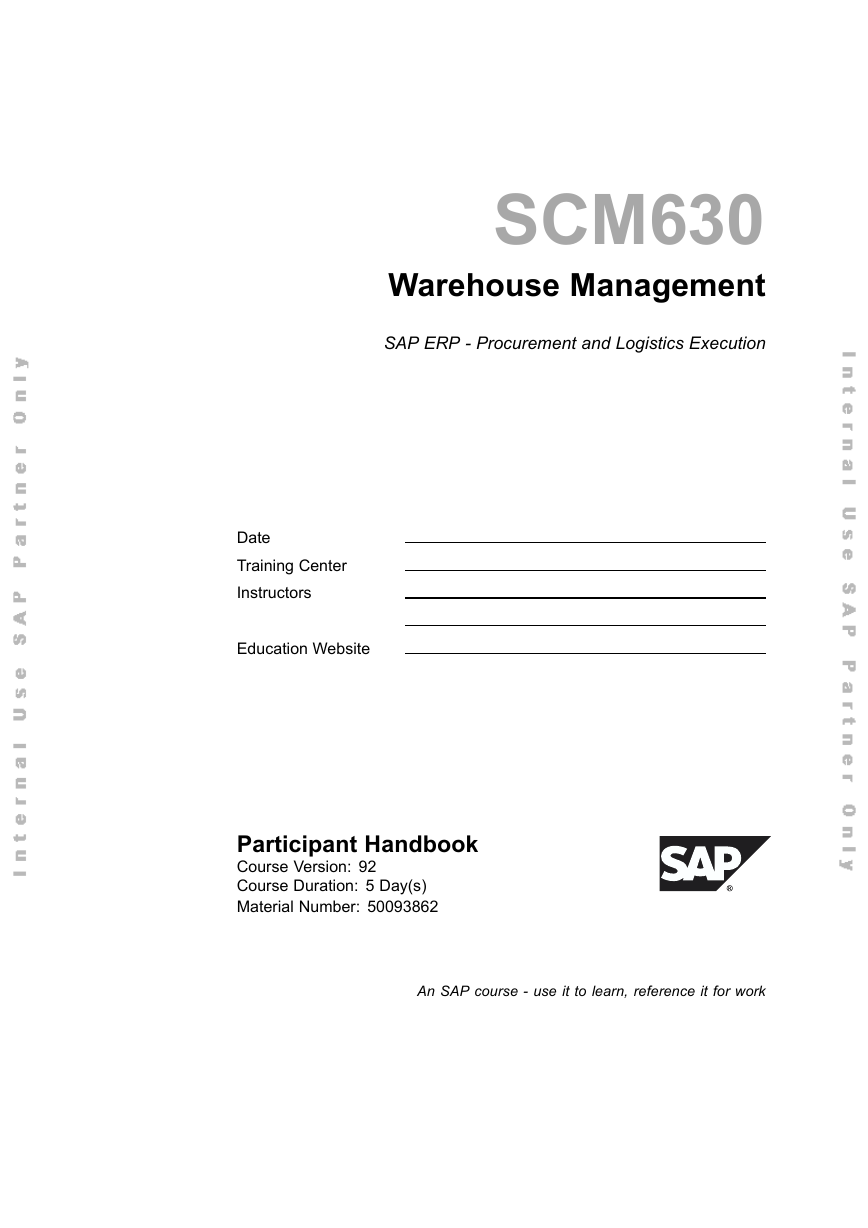
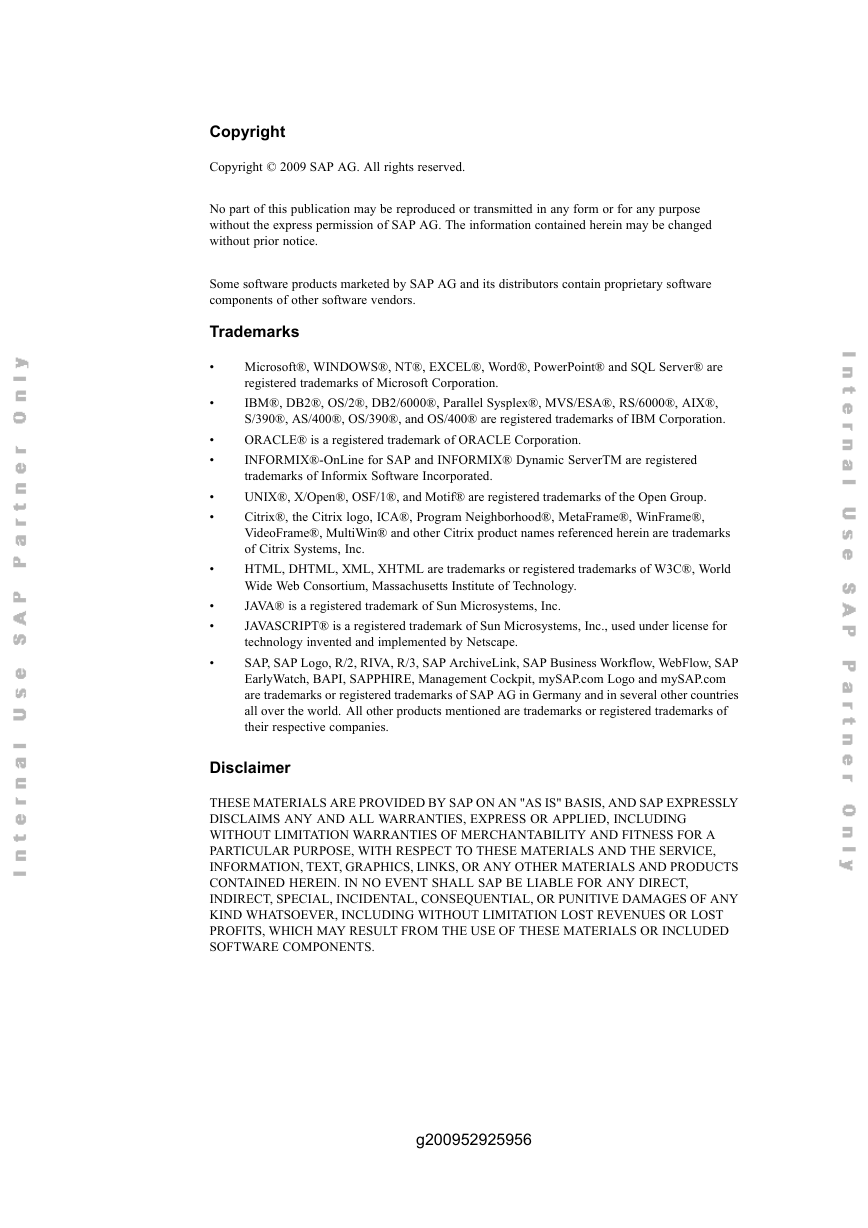
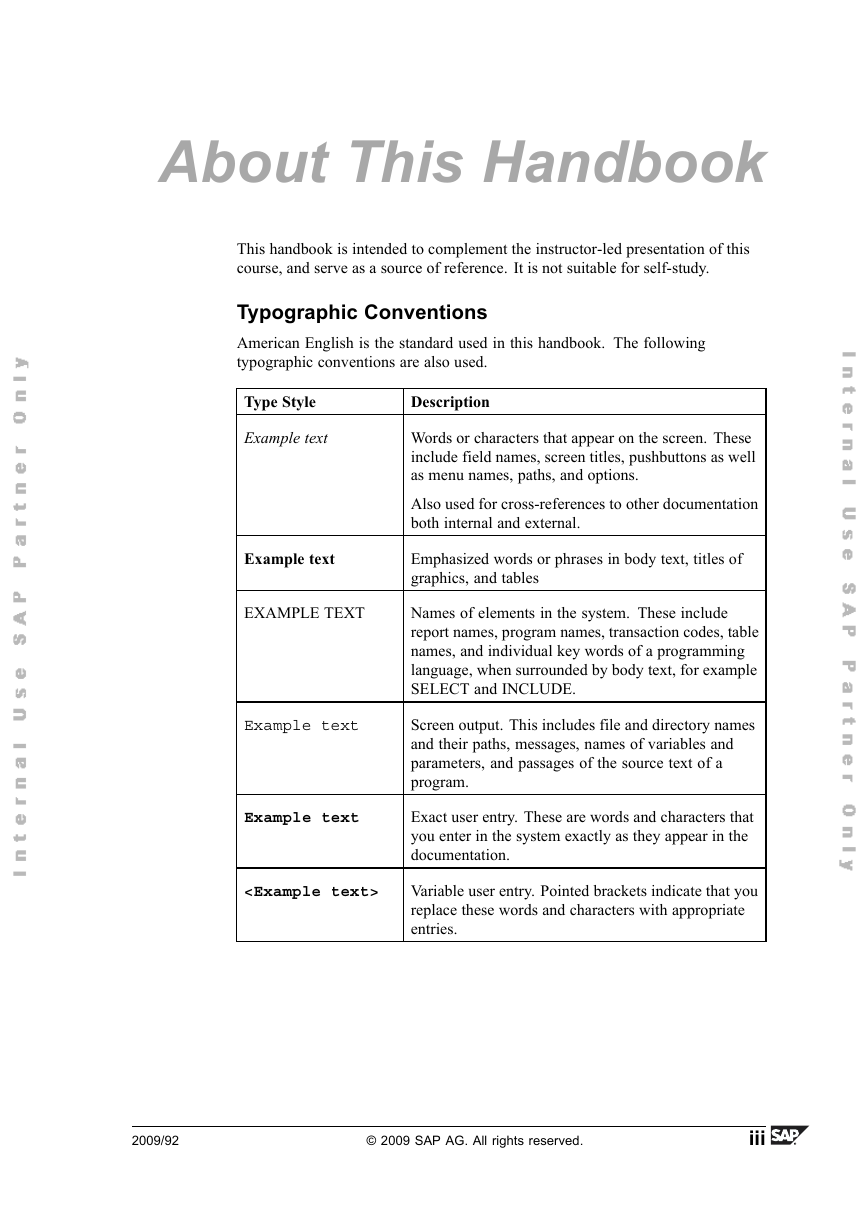


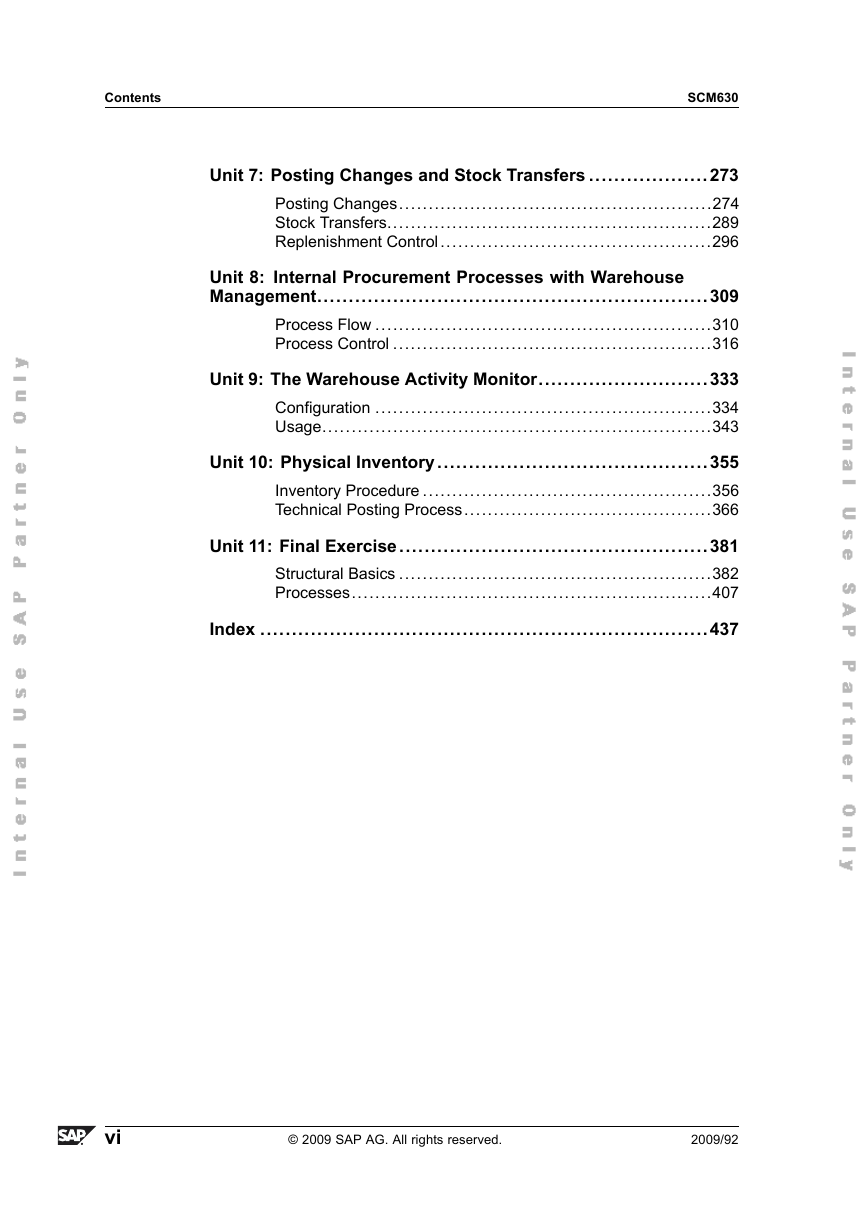
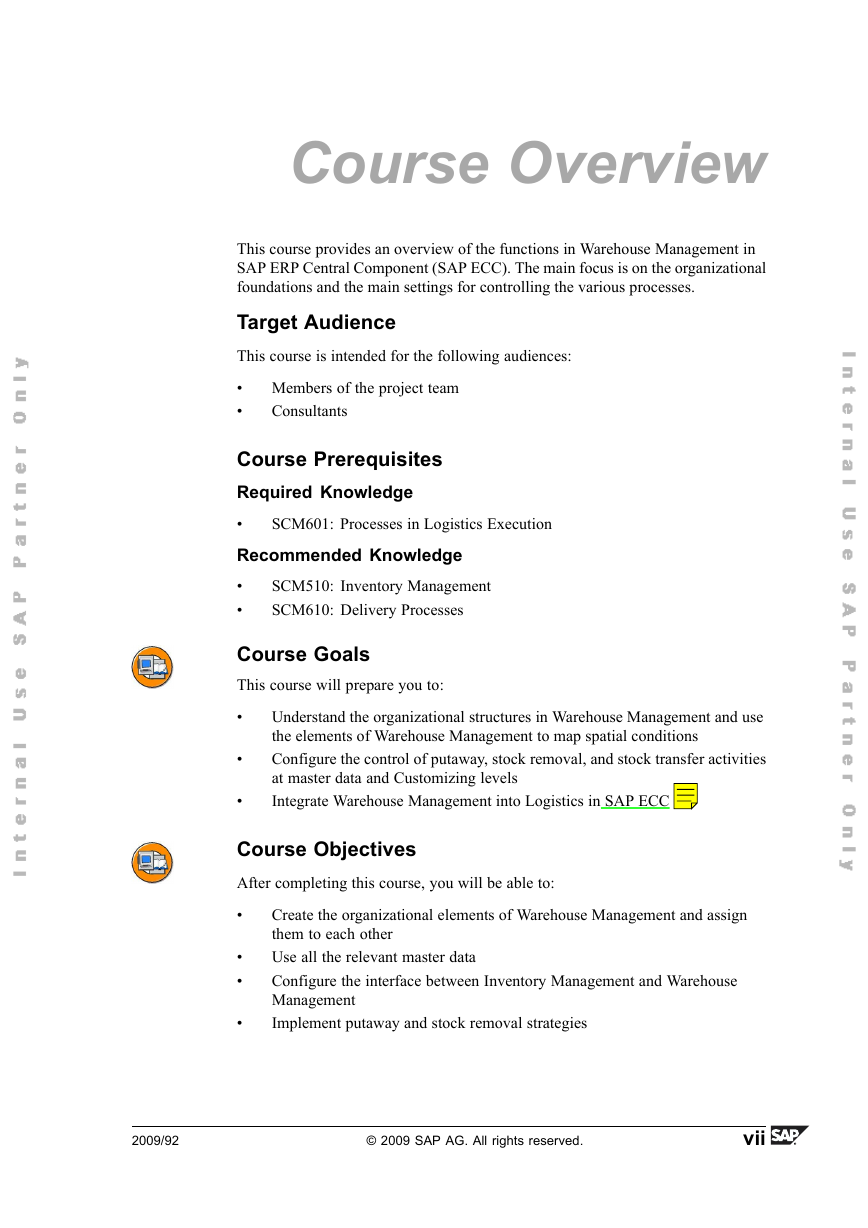
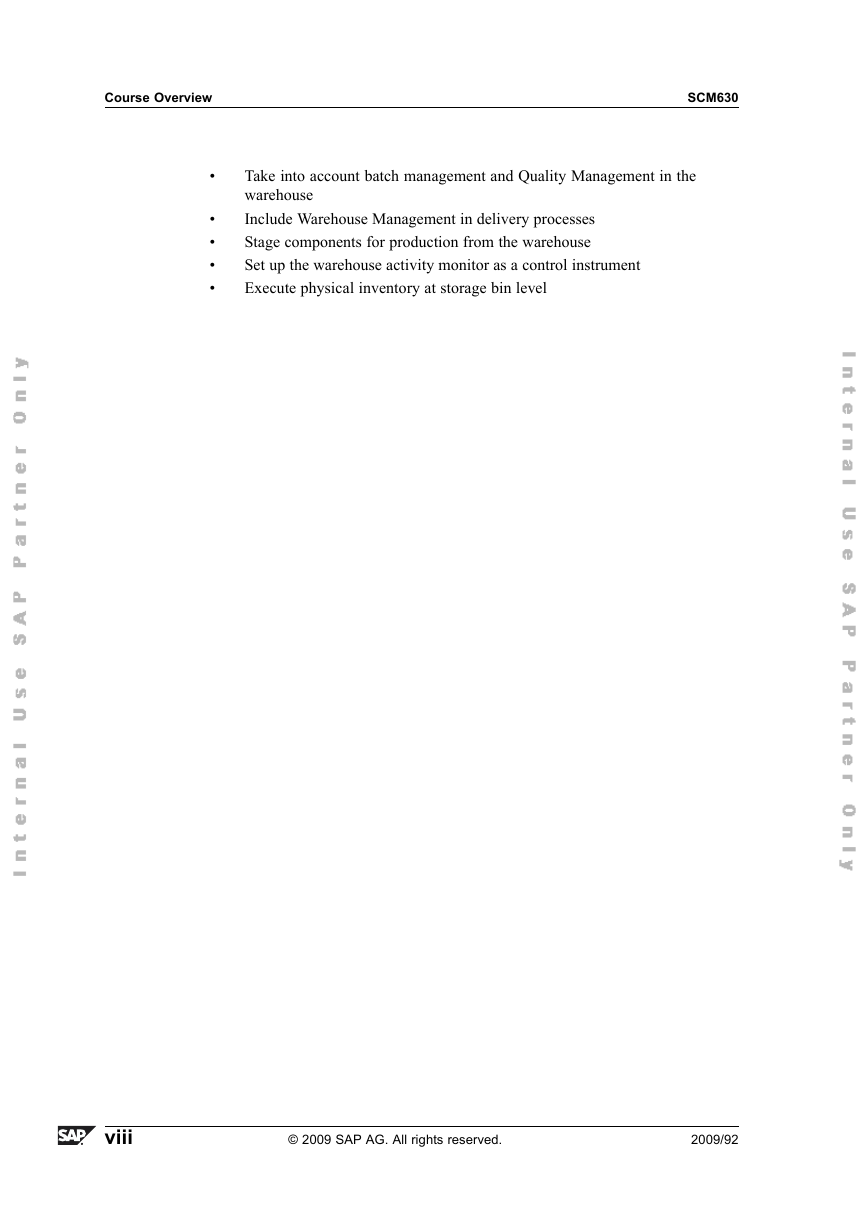








 2023年江西萍乡中考道德与法治真题及答案.doc
2023年江西萍乡中考道德与法治真题及答案.doc 2012年重庆南川中考生物真题及答案.doc
2012年重庆南川中考生物真题及答案.doc 2013年江西师范大学地理学综合及文艺理论基础考研真题.doc
2013年江西师范大学地理学综合及文艺理论基础考研真题.doc 2020年四川甘孜小升初语文真题及答案I卷.doc
2020年四川甘孜小升初语文真题及答案I卷.doc 2020年注册岩土工程师专业基础考试真题及答案.doc
2020年注册岩土工程师专业基础考试真题及答案.doc 2023-2024学年福建省厦门市九年级上学期数学月考试题及答案.doc
2023-2024学年福建省厦门市九年级上学期数学月考试题及答案.doc 2021-2022学年辽宁省沈阳市大东区九年级上学期语文期末试题及答案.doc
2021-2022学年辽宁省沈阳市大东区九年级上学期语文期末试题及答案.doc 2022-2023学年北京东城区初三第一学期物理期末试卷及答案.doc
2022-2023学年北京东城区初三第一学期物理期末试卷及答案.doc 2018上半年江西教师资格初中地理学科知识与教学能力真题及答案.doc
2018上半年江西教师资格初中地理学科知识与教学能力真题及答案.doc 2012年河北国家公务员申论考试真题及答案-省级.doc
2012年河北国家公务员申论考试真题及答案-省级.doc 2020-2021学年江苏省扬州市江都区邵樊片九年级上学期数学第一次质量检测试题及答案.doc
2020-2021学年江苏省扬州市江都区邵樊片九年级上学期数学第一次质量检测试题及答案.doc 2022下半年黑龙江教师资格证中学综合素质真题及答案.doc
2022下半年黑龙江教师资格证中学综合素质真题及答案.doc